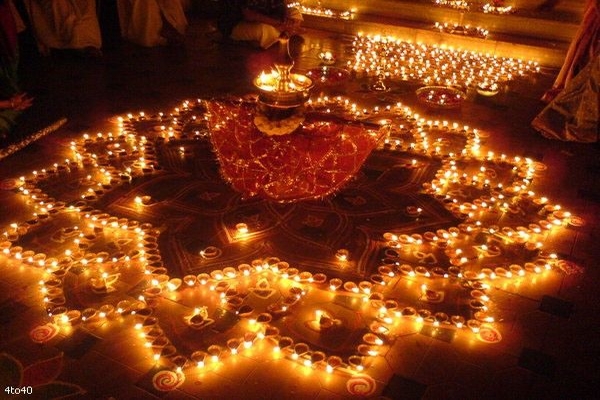Come the eighth month Kartik of Hindu calendar, the no-moon day is agog with illumination of homes, government buildings, workplaces and industrial houses of northern and other parts of the country. A few days later similar lighting is fervently observed by the Sikh people. To Hindus in particular, Diwali or Deepavali (literally meaning the array of traditional earthen diya or lamp) is a time for giving a facelift to residential and commercial premises, new personal and home purchases including vehicles, land and property. A diya is believed to ward off evil powers, augur well for inmates by advent of fortune. Our reverence for light emanates from our primeval instinct to worship Fire, one of the cardinal elements. Many business houses begin new financial year with Diwali. The festival is associated particularly among the Hindu with ushering in of festivity, mirth and prosperity and special worship of Lakshmi, the Goddess of wealth.
No ceremonial function of any faith – birth or anniversary celebrations, inauguration of meeting, conferences and meetings of all descriptions including the scientific ones, foundation laying of residential, office, commercial or other premises is deemed accomplished without lighting the holy lamp.
Igniting the candles is integral to observance of religious ceremonies of most faiths. The Hindu lit oil lamp at sanctum mainly before the idols of Lakshmi and Ganesh at the auspicious moment at dusk and seek their blessings for prosperity and well being of the self and the family. Muslims hold that the light present on this planet and in Jannat (Heaven) is a manifestation of the omniscient Allah Himself. Among Christians, the sanctuary lamp to “keep a flame burning perpetually” is always placed before the tabernacle. Holy biblical texts are ever read out in candle light since “Christ is the Light that enlightens all”. Believing light to be a divine presence, Christians ignite newly constructed churches with flambeau followed by lighting prayer halls. At funeral, each visitor extinguishes their candle implying that one day each of us has to surrender to God. Candle is also integral part of worship among followers of Buddhism and Judaism. To Parsis, fire symbolises propriety, to Jews constellations of light mean unswerving faith. Lamp or candle lighting is not confined to religious or cultural festivities.
A small candle dispels darkness all round. Lighting and propitiating the fire God are also supposed to ward off supernatural obstacles, and usher in positive vibes. For worldly activities to go on, one has to consciously stay spirited and proceed towards light. The guiding principle prescribed in Hindu scriptures, ‘Tamso ma jyotirgamay’ (i.e. lead me from darkness to enlightenment) exhorts one to continuously dispel ignorance not only within but also among others, and stay awakened to lead a meaningful and fulfilling life.
In the flamboyancy to show off one’s riches, some people are tempted to indulge in lavish spending on lights and fireworks that is not in consonance with divine wishes. The divine plan envisages that none should be deprived of the bounties of nature. Monopolosing the extraneous, beyond one’s own need is sinful. By implication, whatever one has in excess of one’s needs, it must be shelled out among the less fortunate ones.
How do we appease God, say Goddess Lakshmi? Not certainly by just bowing before Her. This is just ritualistic. We pay true regards by carrying out what the higher powers want and mean. This can be accomplished in two ways: not squandering the valuable money on ostentations and ego satisfaction. By spending profusely in pomp, one not only pampers one’s ego, but also tends to humiliate those who cannot afford it. Both of these are sinful.
In contrast to our cover, the body, the divine flame within each of us is indomitable, as Maya Angelou said: Nothing can dim the light that shines from within. We cannot seek enlightenment in outside world through ostentation but by searching since it is already within. It is that inner light that has to be kept aflame.
…………………………………………………………………………………………
Published at edit page (page 6) in Orissa Post on 14 November 2020.
………………………………………………………………………………





Very good article! We will be linking to this particularly great article on our site. Keep up the great writing.
You offered a balanced sight of the subject, permitting visitors to create their own viewpoint.
Your post was free of errors and had no typos or grammatical errors.
Thanks a lot.
I am so grateful for your unlimited assistance and love. I am so grateful to have you in my life.
You constantly know just how to make me feel better. You have such a kind as well as caring nature.
You provided visitors with an expert’s viewpoint on the topic.
Your determination to succeed goes over. I am so happy to have you in my life.
I’m always impressed by your intelligence and knowledge. You constantly locate a way to make me smile.
I truly love your website.. Excellent colors &!
I have an expert designer-cum-hosting engineer.